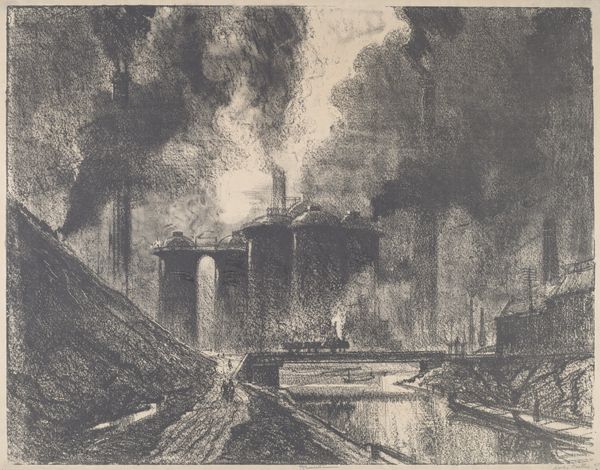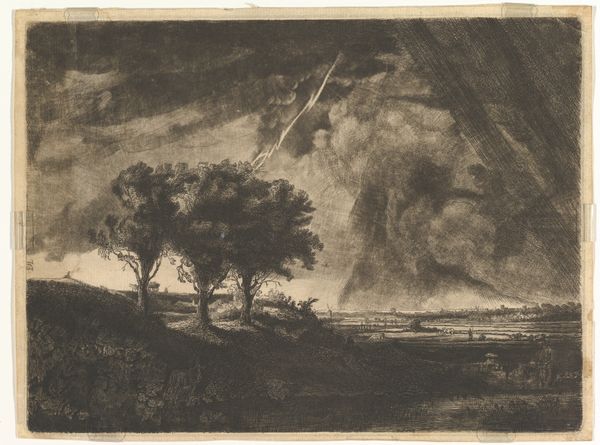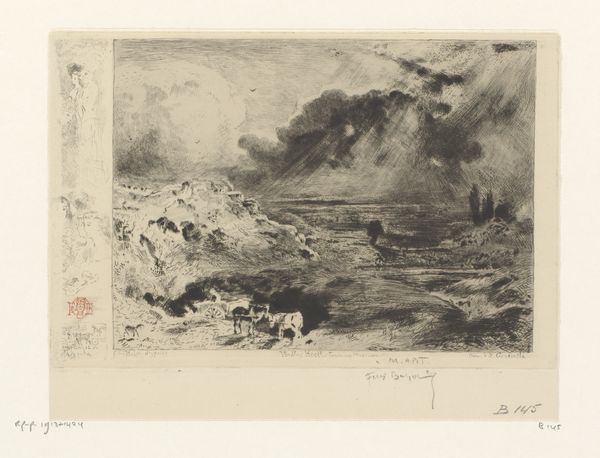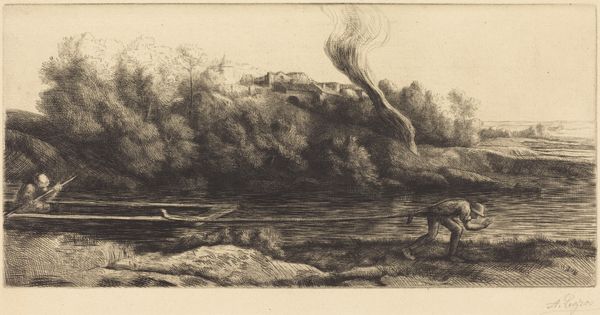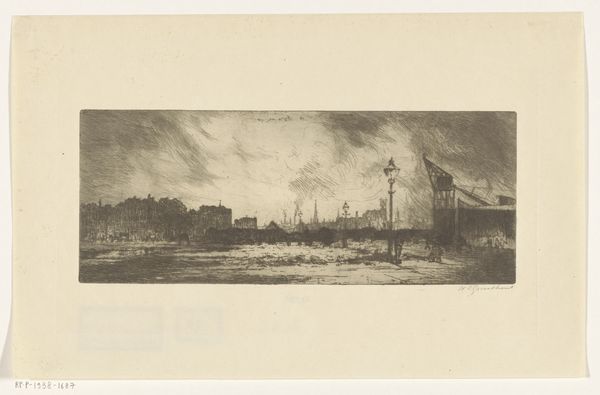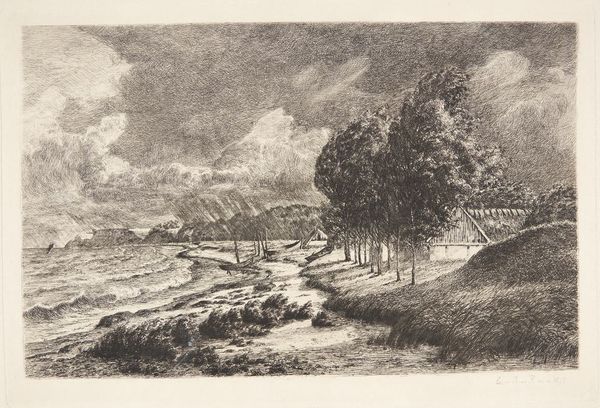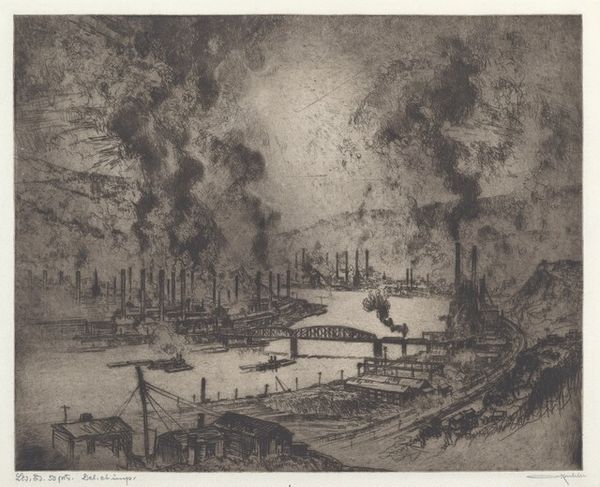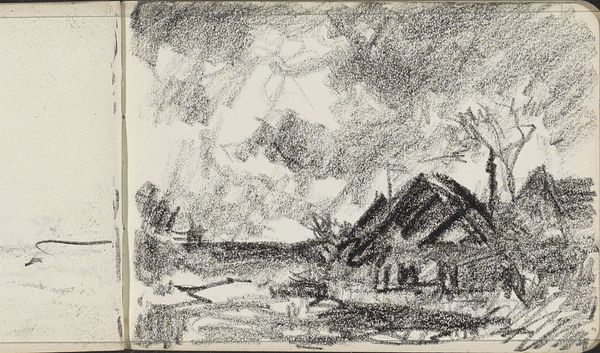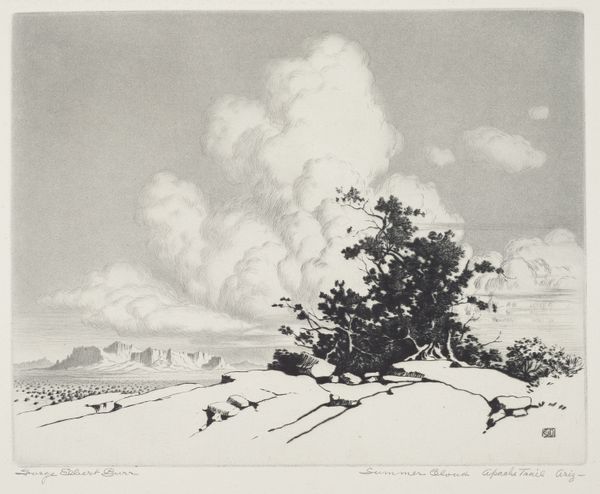
drawing, print, etching, graphite
#
drawing
# print
#
etching
#
landscape
#
graphite
Dimensions: image: 40.32 × 53.02 cm (15 7/8 × 20 7/8 in.) sheet: 47.31 × 62.55 cm (18 5/8 × 24 5/8 in.)
Copyright: National Gallery of Art: CC0 1.0
Curator: This image, etched and drawn in graphite, is titled *Anaconda, Montana*. It comes to us from the year 1915, and the artist is Joseph Pennell. The industrial scene strikes a stark, ominous note. Editor: Ominous is right. I’m immediately struck by how imposing that thick, dark smoke plume is against the somewhat blurred and tumultuous sky. It feels heavy, like it’s pressing down on the scene. Curator: Pennell often addressed industrial subjects, portraying them as integral—even impressive—parts of the landscape, a stance ripe for critical analysis. What ideology underpins celebrating industry without acknowledging the human and environmental costs? Who benefits, and at what expense? Consider the absence of human figures here—are they deliberately erased to sanitize the narrative, emphasizing instead a cold, impersonal monumentality? Editor: Yes, the smokestacks become almost like obelisks in a strange, new landscape. I think the composition is really powerful, especially in its use of light and shadow. There’s almost a romantic sensibility applied to the depiction of the industrial age here, and there's also this idea of man vs. nature playing out – although the factory seems to have definitely won here. This type of image normalizes the expansion of industrial labor at the expense of the landscape. Curator: Absolutely. How do we negotiate the tension between artistic expression and social responsibility? Pennell's image prompts us to reflect critically on our own complicity in perpetuating harmful systems. Even appreciating its artistic merits forces us to consider our positionality regarding its underlying values. Does our aesthetic appreciation unintentionally validate a troubling narrative? Editor: It certainly makes one wonder about Pennell’s motivations. I think examining images like these helps to foster much-needed conversations about environmental justice and accountability. Thank you for that framing. Curator: And thank you for so vividly painting this broader landscape for us!
Comments
No comments
Be the first to comment and join the conversation on the ultimate creative platform.

